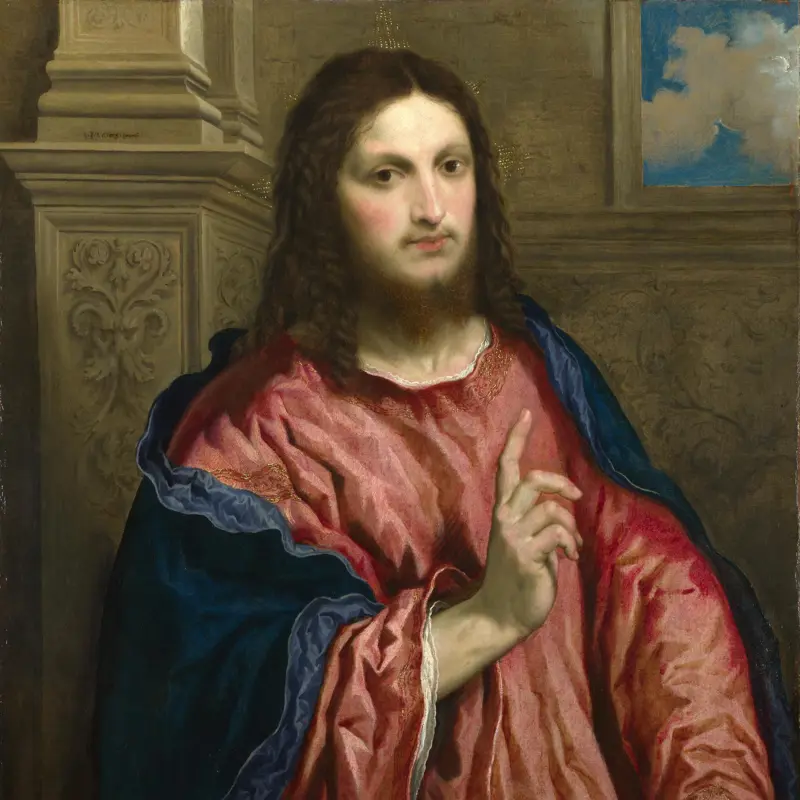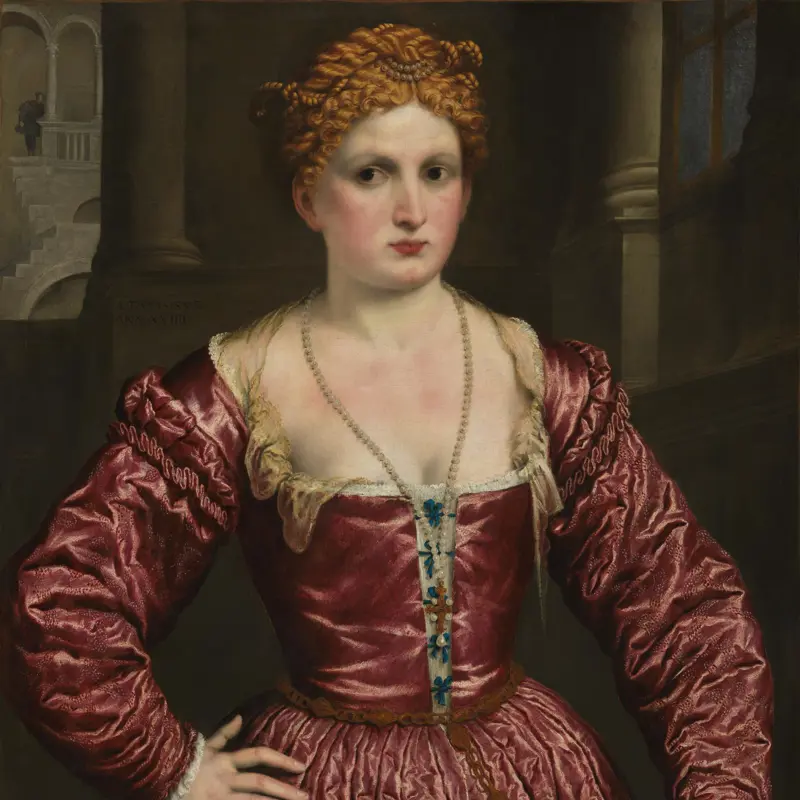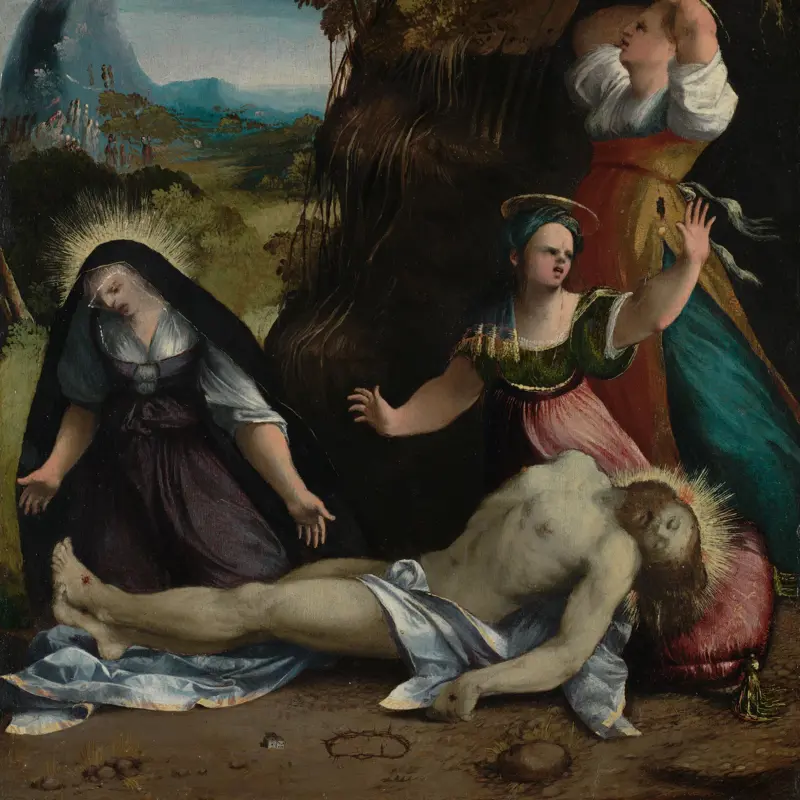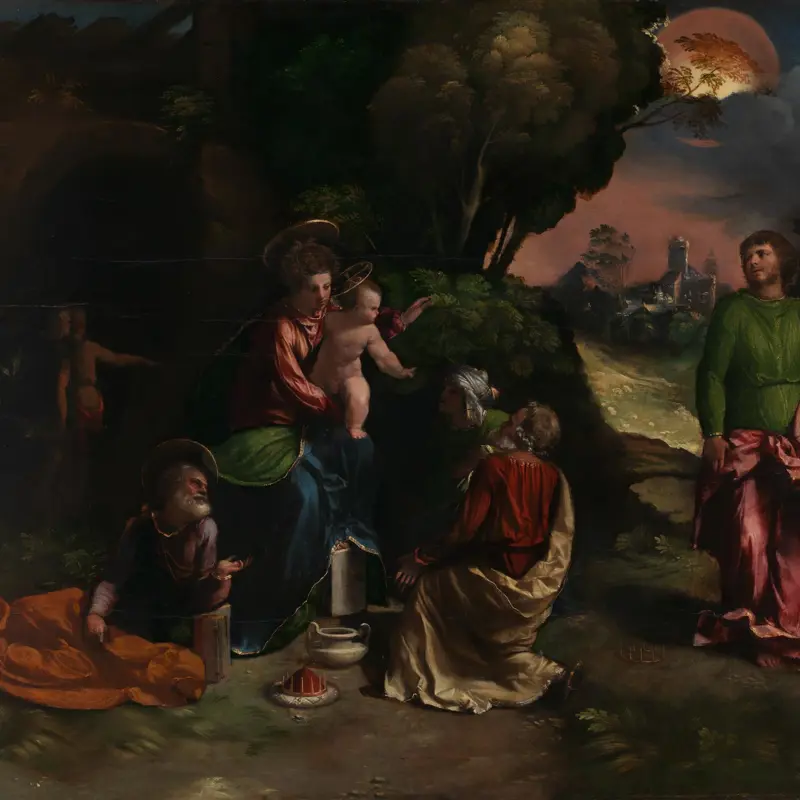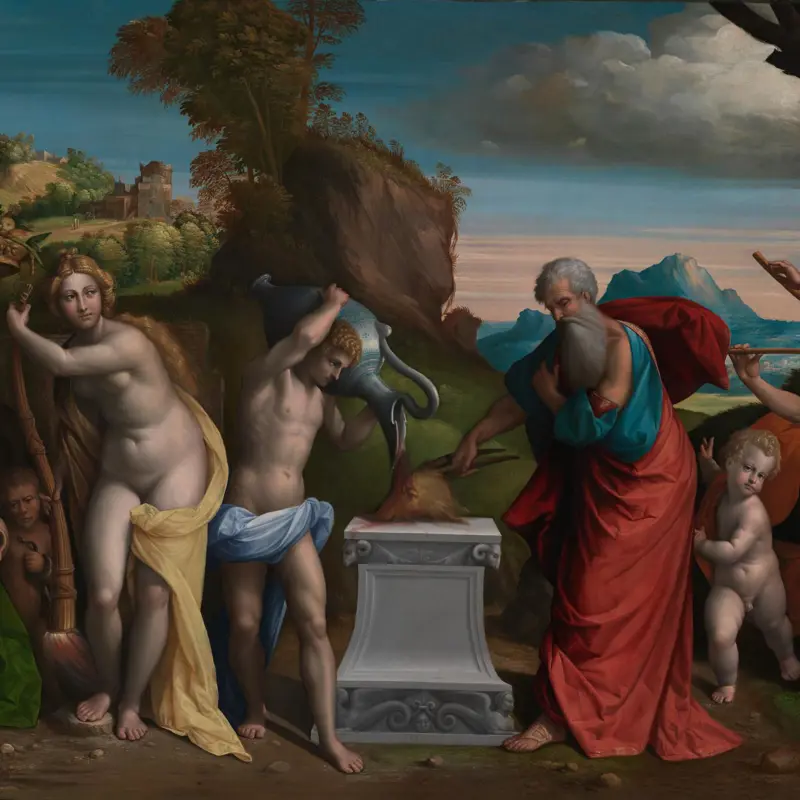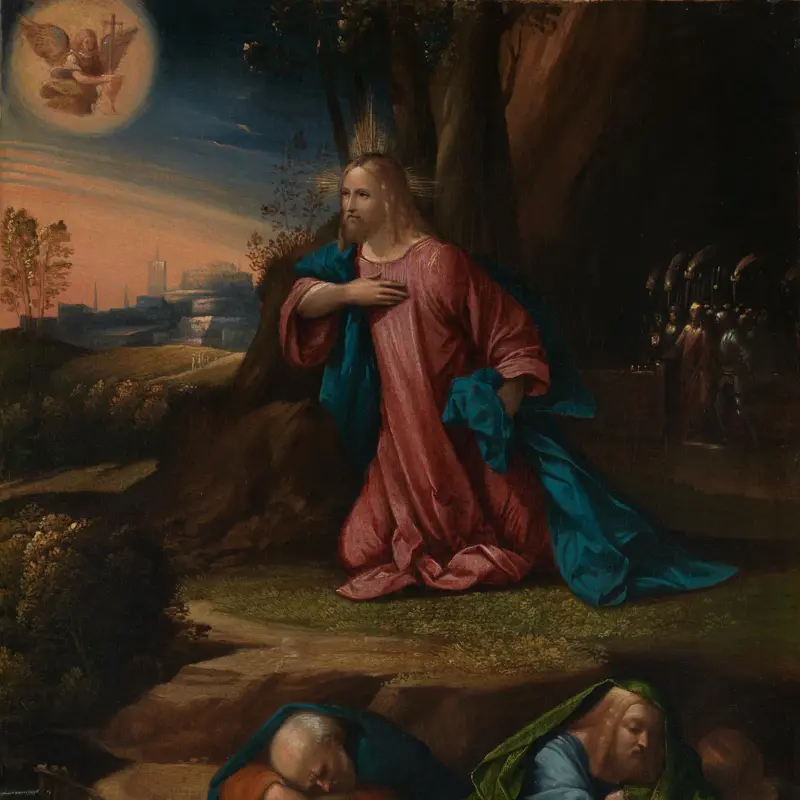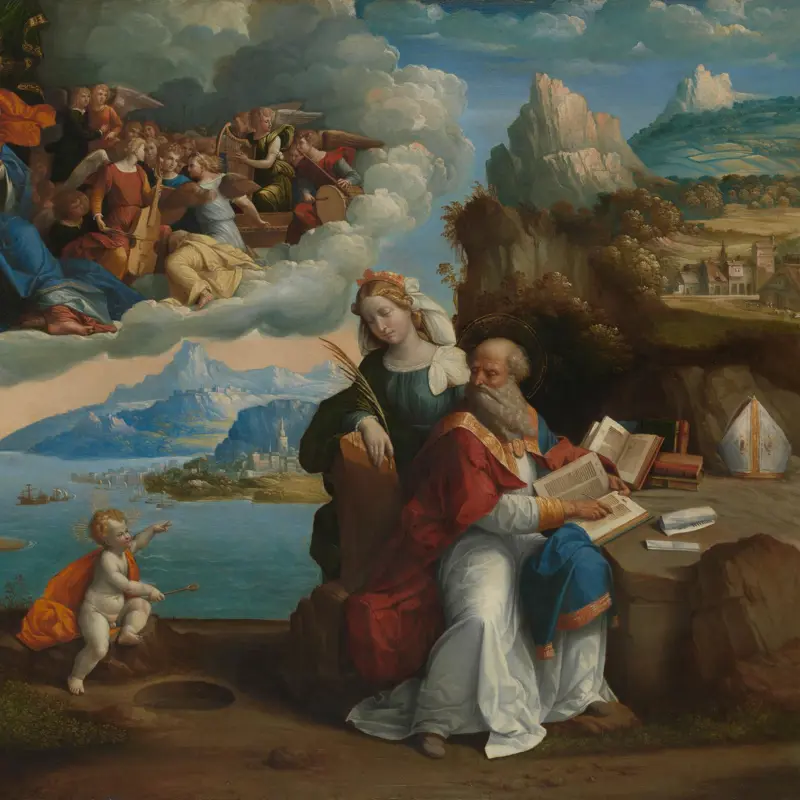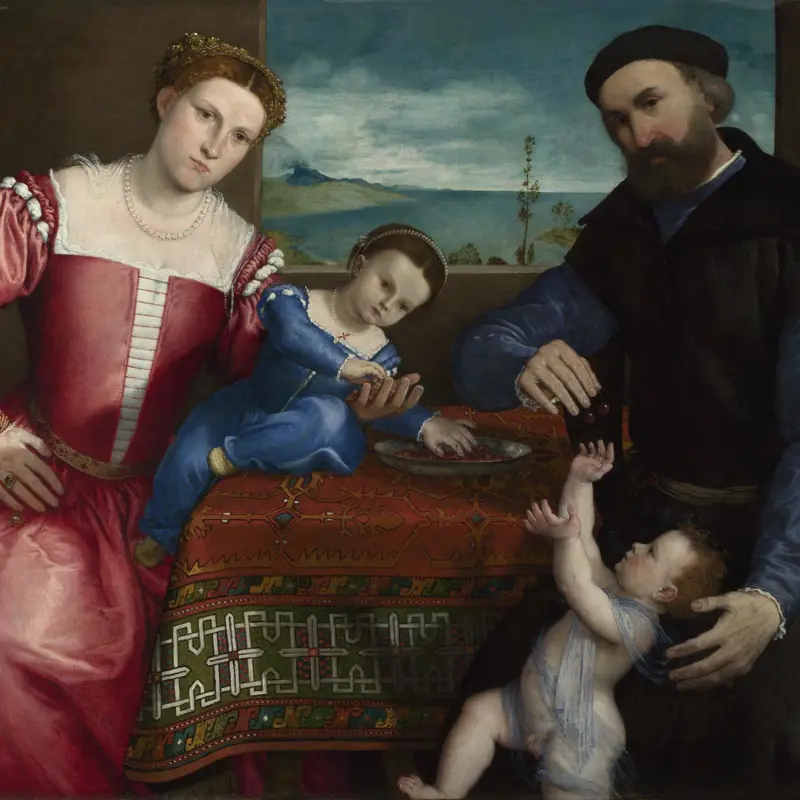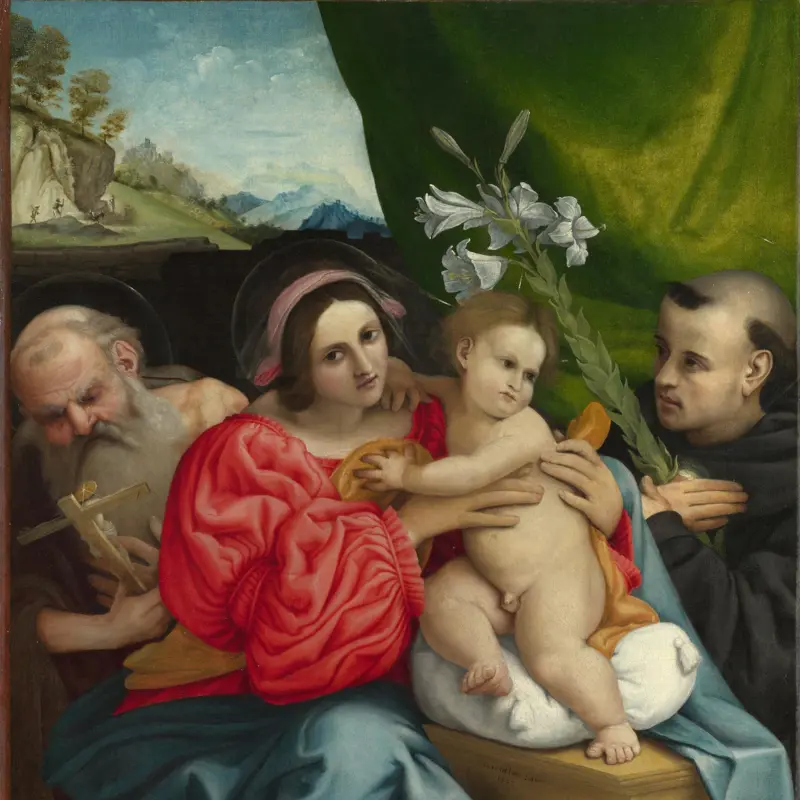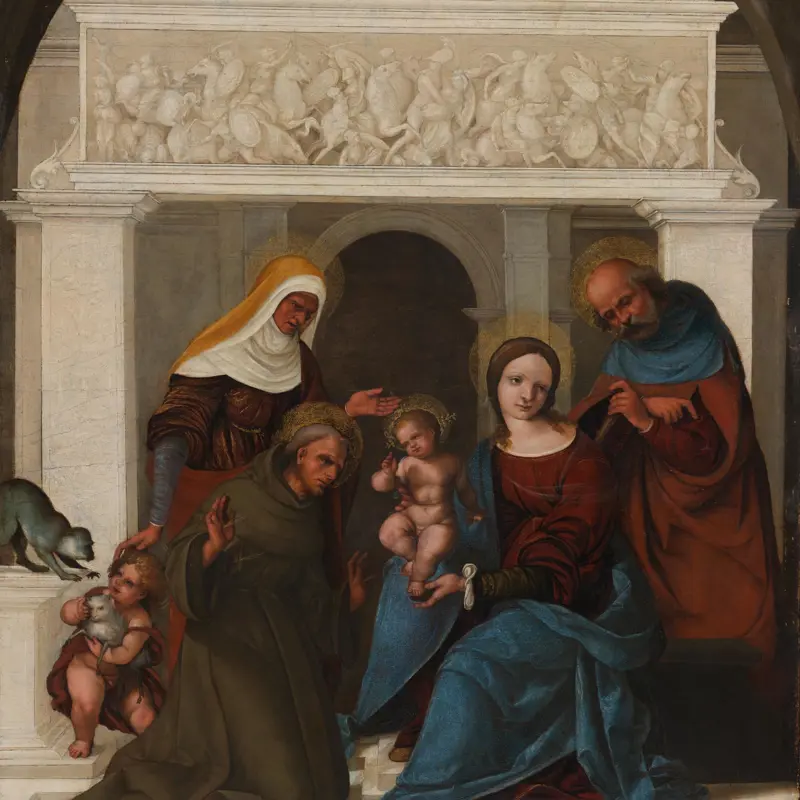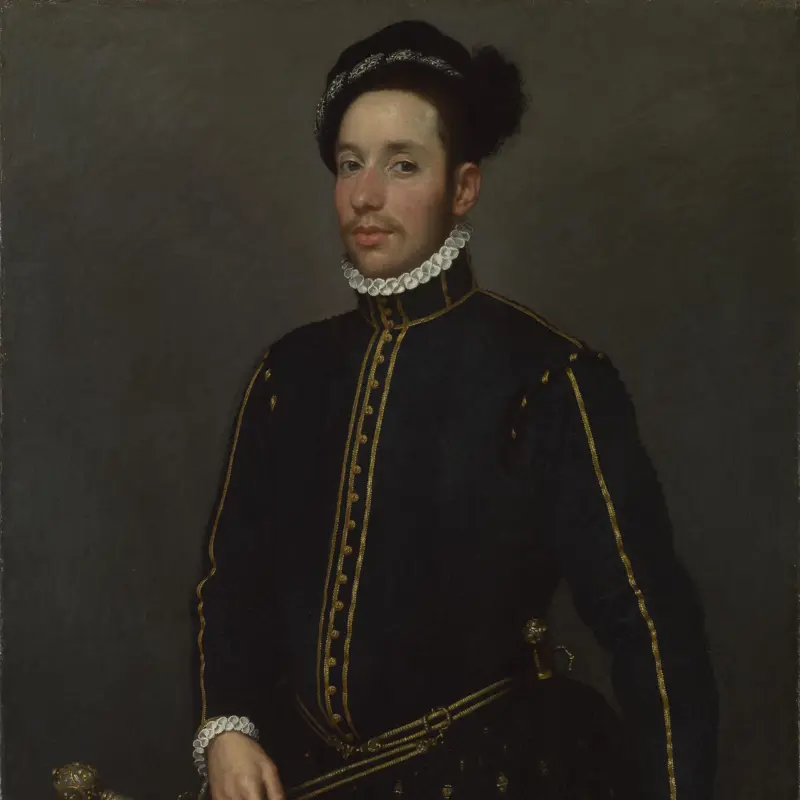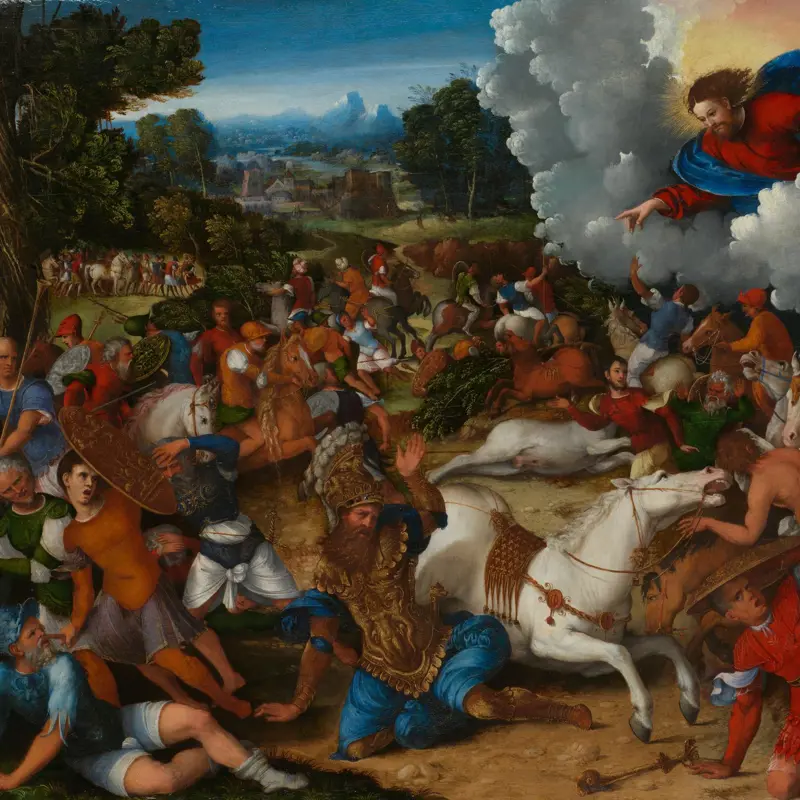The courts of northern Italy were at the crossroads of artistic and cultural exchange between northern and southern Europe. Artists travelling between these cities introduced new styles and genres, such as the family portrait, to local patrons. Lorenzo Lotto was a versatile painter who had trained in Venice and worked in Rome, the Marches and Bergamo.
The loose brushwork and rich colour of Venetian painting deeply impressed painters on the mainland, like Dosso Dossi, Garofalo and Mazzolino, court artists of Ferrara. These painters cultivated a distinctive, local style that was nonetheless indebted to innovations in Rome as well as Venice.
A key feature of 16th-century northern Italian portraiture is its striking authenticity. Artists such as Paris Bordone in Treviso and Giovanni Battista Moroni in Bergamo became the favourite painters of the local elites. Their portraits share a remarkable sense of individuality and immediacy, capturing both their sitters' inner and outer selves through expressive poses and a dynamic play of light and shadow. Vibrant surface textures and costly fabrics catch the eye, while classical backdrops convey a sense of elegance and authority.


